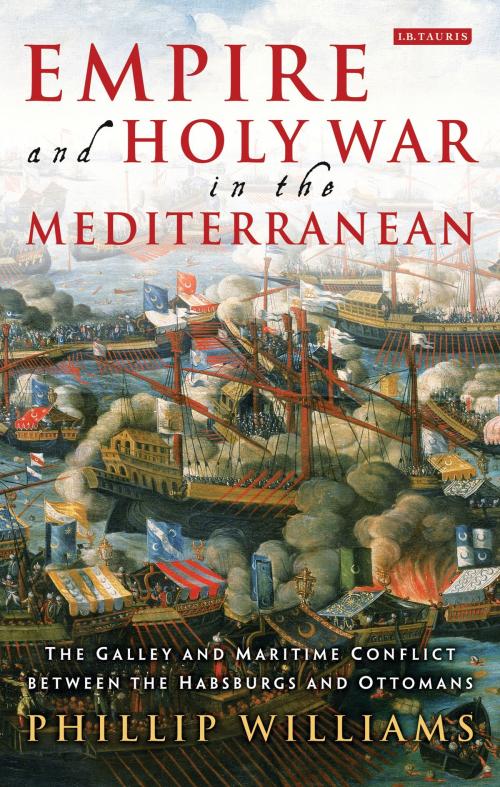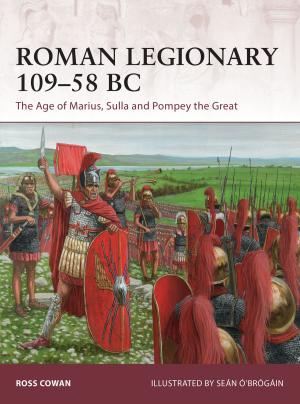Empire and Holy War in the Mediterranean
The Galley and Maritime Conflict between the Habsburgs and Ottomans
Nonfiction, History, Modern, 17th Century, Military, Naval| Author: | Phillip Williams | ISBN: | 9780857735980 |
| Publisher: | Bloomsbury Publishing | Publication: | May 12, 2014 |
| Imprint: | I.B. Tauris | Language: | English |
| Author: | Phillip Williams |
| ISBN: | 9780857735980 |
| Publisher: | Bloomsbury Publishing |
| Publication: | May 12, 2014 |
| Imprint: | I.B. Tauris |
| Language: | English |
In the century after 1530 the empires of the Habsburgs of Spain and the Ottoman Turks fought a maritime war that seemed destined to lead nowhere:: lasting peace was as unlikely as final triumph, in part because the salient feature of this conflict was a violent form of piracy practiced by the 'corsairs' of North African and Malta. It was fundamentally a war of unequal means, since the Habsburgs of Spain had too few good warships and the Ottomans too many bad ones. Christendom and Islam engaged in a war fought largely through the exercise of private violence: the Hospitaller Knights of Malta and ghazi captains of North Africa succeeded in imposing their crusading ethos on the Mediterranean.
If a degree of futility loomed over these campaigns, it was nevertheless true that the Mediterranean witnessed a sustained conflict which in scale and intensity was far greater than that of any contemporary form of warfare at sea. Moreover the sea was never abandoned as, until at least 1620, large galley fleets continued to patrol the inland sea. The raiding methods employed by Elizabethan 'seadogs' like Sir Francis Drake would certainly not have worked in this theatre of arms, as the defences in Italy and North Africa were much more formidable than those of the Atlantic.
Phillip Williams begins with a detailed examination of the oared warships used in these campaigns. He then explores the structures of political and military organization and the role of geography and the environment in shaping the fighting; stressing that the Italian territories were of vital significance to the Habsburgs of Spain. He considers the cultural and historical outlook of protagonists such as the Habsburg rulers Charles V and Philip II and the Ottoman Sultan Süleyman the Magnificent, examining the extent to which the dictates of prudence triumphed over ideals of performing 'the service of God'. Providing a unique perspective on early modern maritime conflict, this book will be essential reading for all students and researchers of Mediterranean History and the early modern world.
In the century after 1530 the empires of the Habsburgs of Spain and the Ottoman Turks fought a maritime war that seemed destined to lead nowhere:: lasting peace was as unlikely as final triumph, in part because the salient feature of this conflict was a violent form of piracy practiced by the 'corsairs' of North African and Malta. It was fundamentally a war of unequal means, since the Habsburgs of Spain had too few good warships and the Ottomans too many bad ones. Christendom and Islam engaged in a war fought largely through the exercise of private violence: the Hospitaller Knights of Malta and ghazi captains of North Africa succeeded in imposing their crusading ethos on the Mediterranean.
If a degree of futility loomed over these campaigns, it was nevertheless true that the Mediterranean witnessed a sustained conflict which in scale and intensity was far greater than that of any contemporary form of warfare at sea. Moreover the sea was never abandoned as, until at least 1620, large galley fleets continued to patrol the inland sea. The raiding methods employed by Elizabethan 'seadogs' like Sir Francis Drake would certainly not have worked in this theatre of arms, as the defences in Italy and North Africa were much more formidable than those of the Atlantic.
Phillip Williams begins with a detailed examination of the oared warships used in these campaigns. He then explores the structures of political and military organization and the role of geography and the environment in shaping the fighting; stressing that the Italian territories were of vital significance to the Habsburgs of Spain. He considers the cultural and historical outlook of protagonists such as the Habsburg rulers Charles V and Philip II and the Ottoman Sultan Süleyman the Magnificent, examining the extent to which the dictates of prudence triumphed over ideals of performing 'the service of God'. Providing a unique perspective on early modern maritime conflict, this book will be essential reading for all students and researchers of Mediterranean History and the early modern world.















